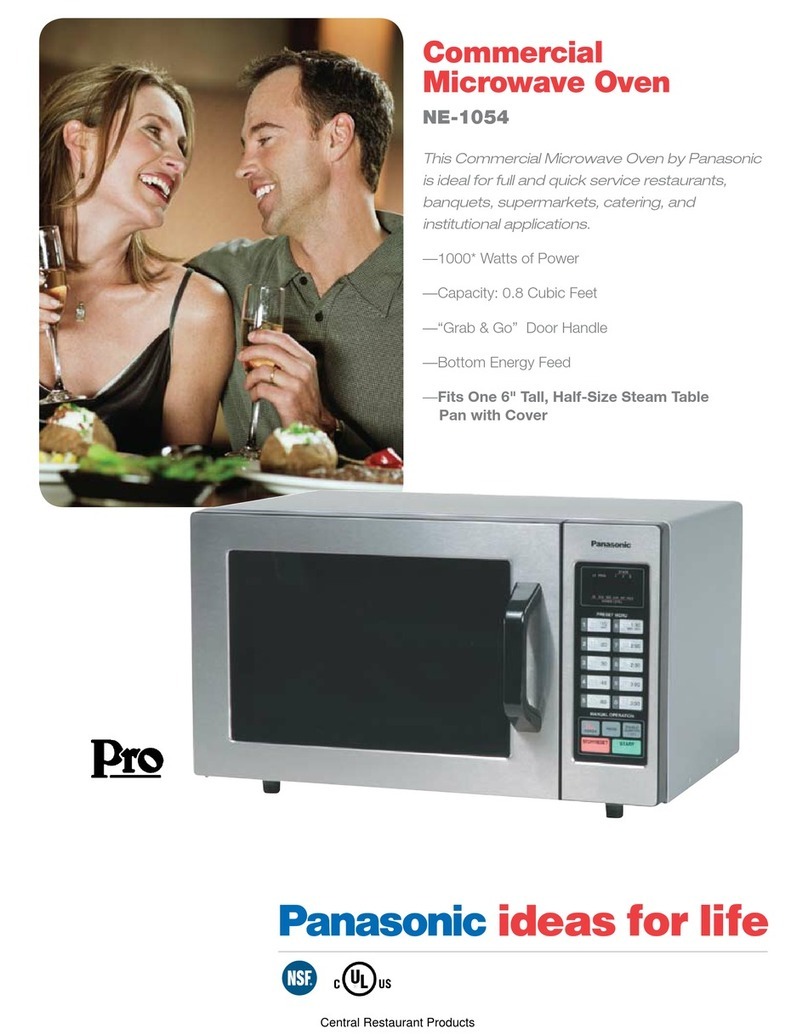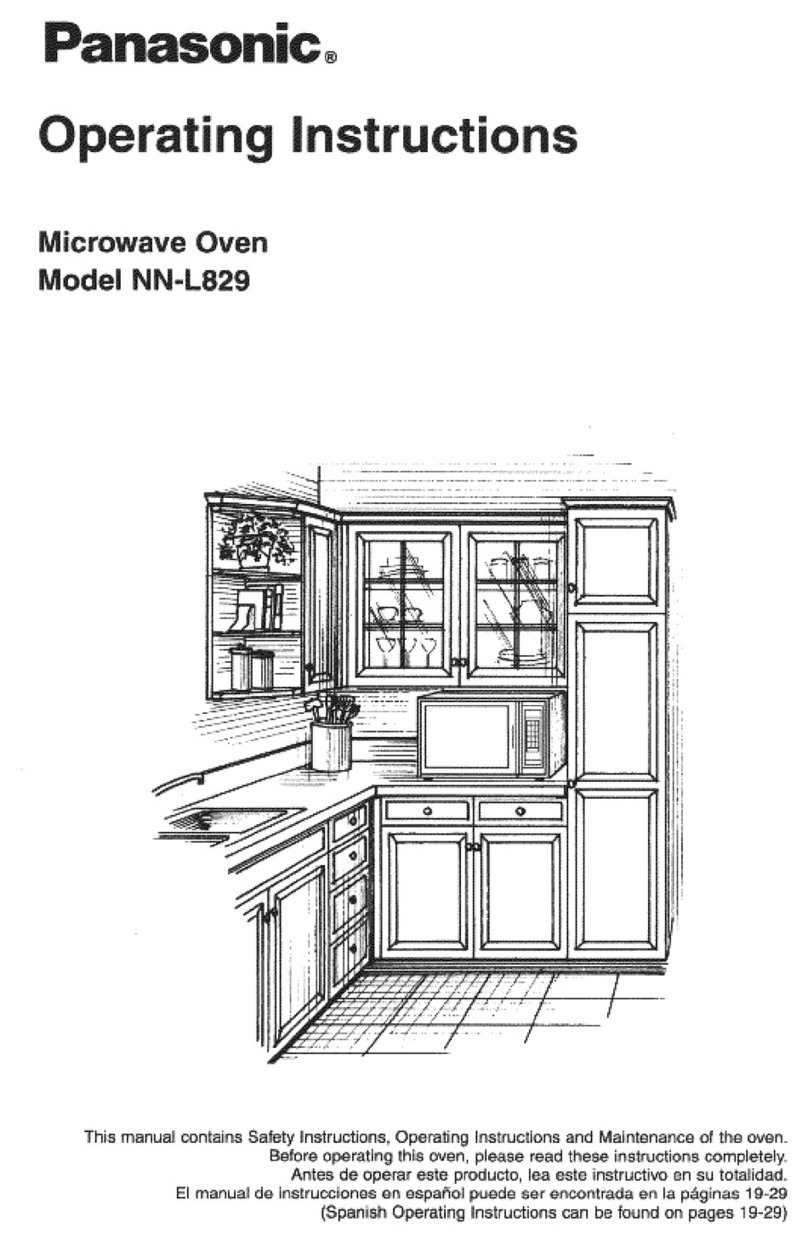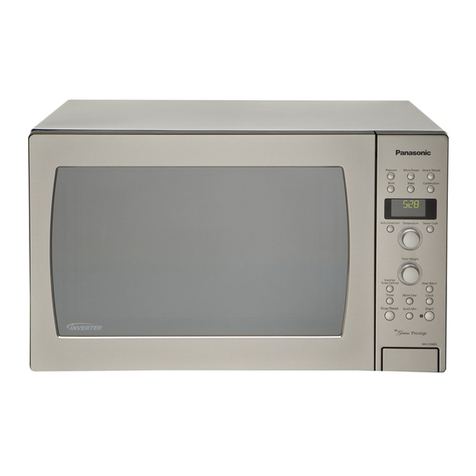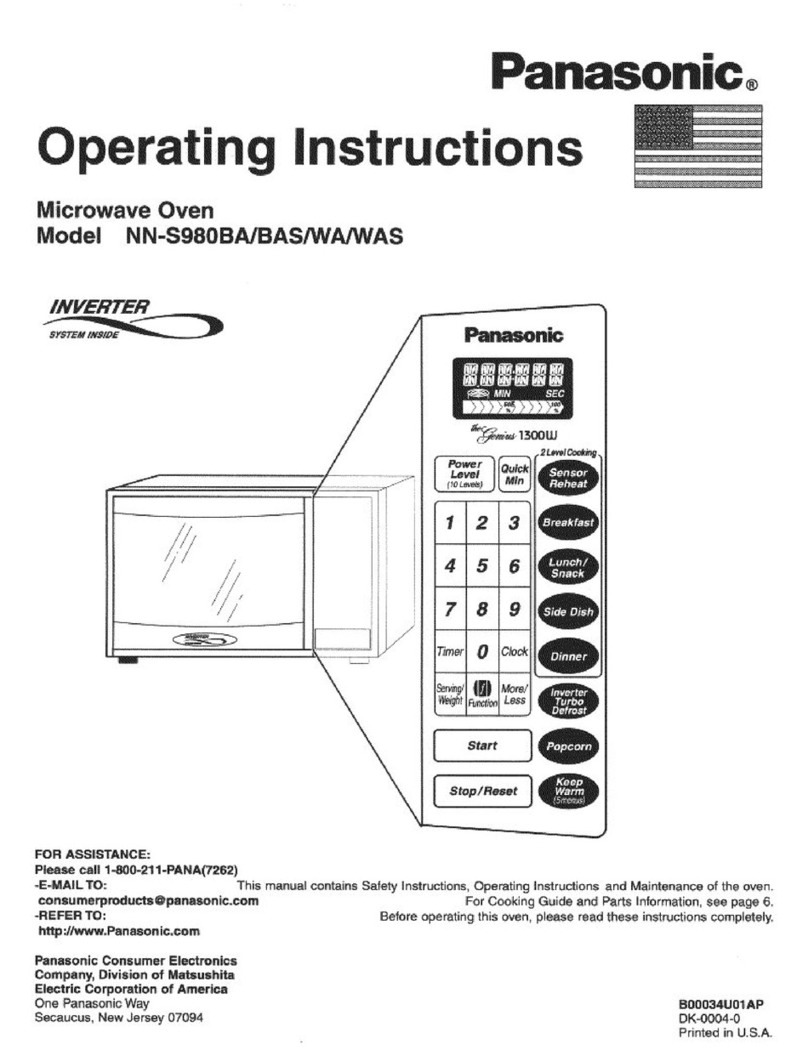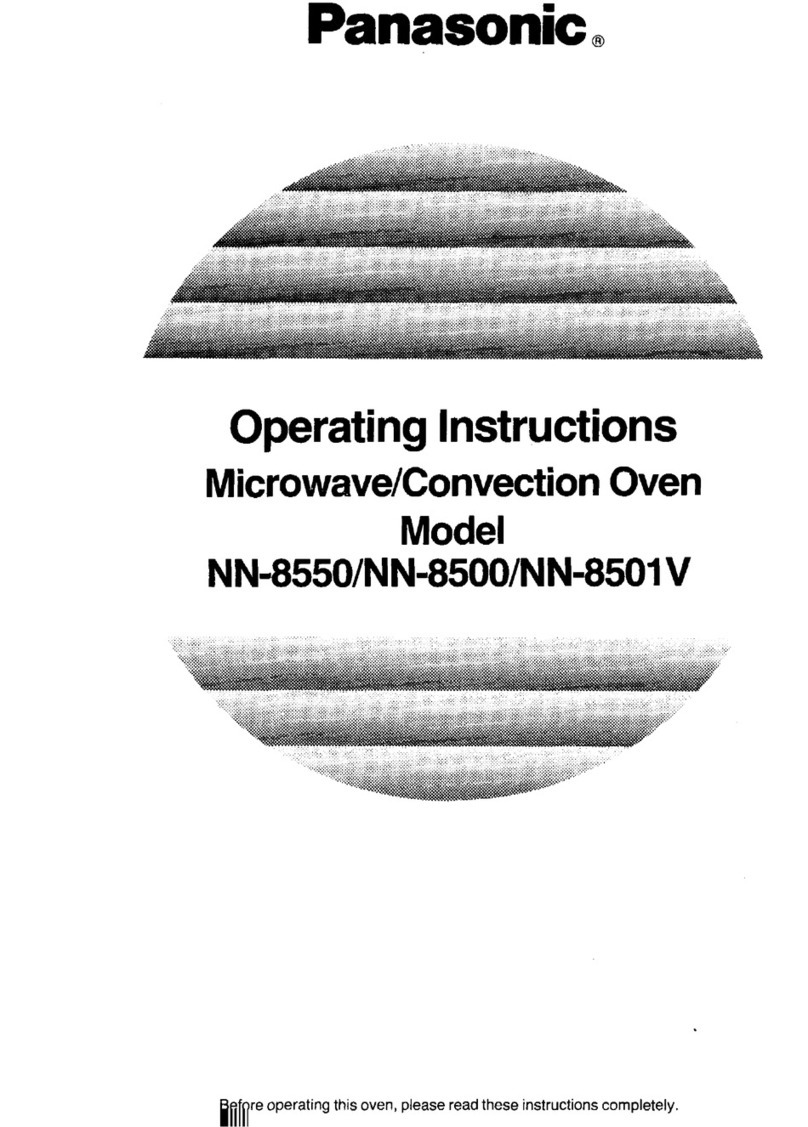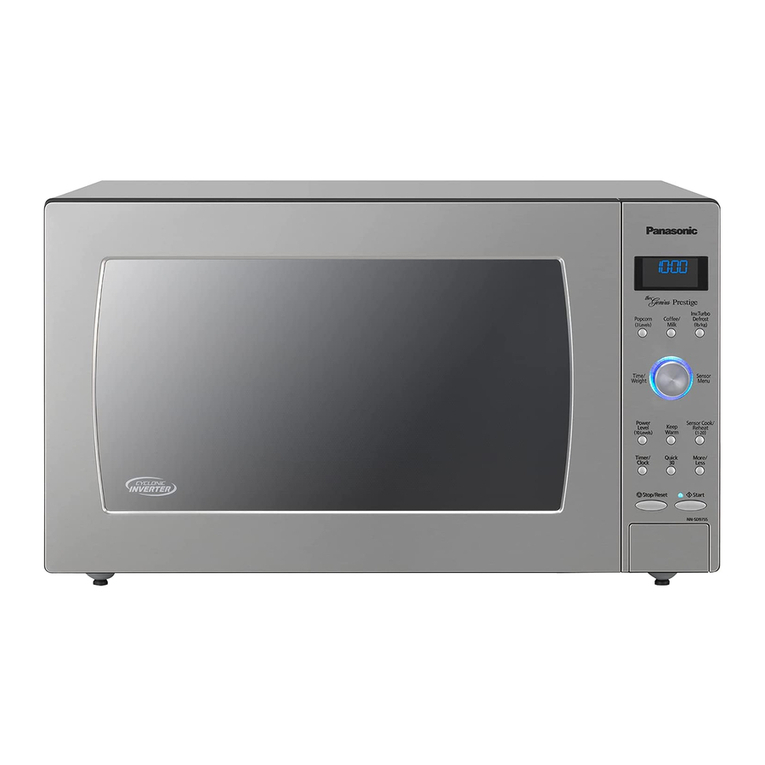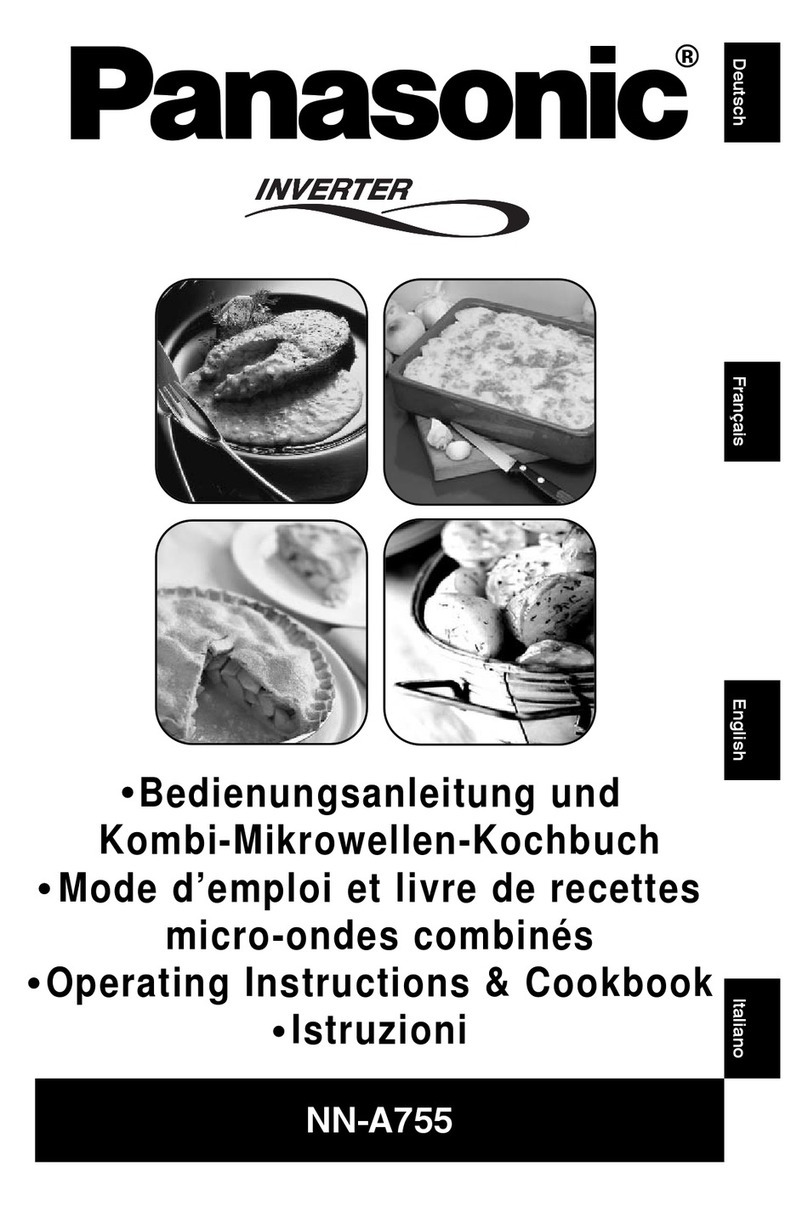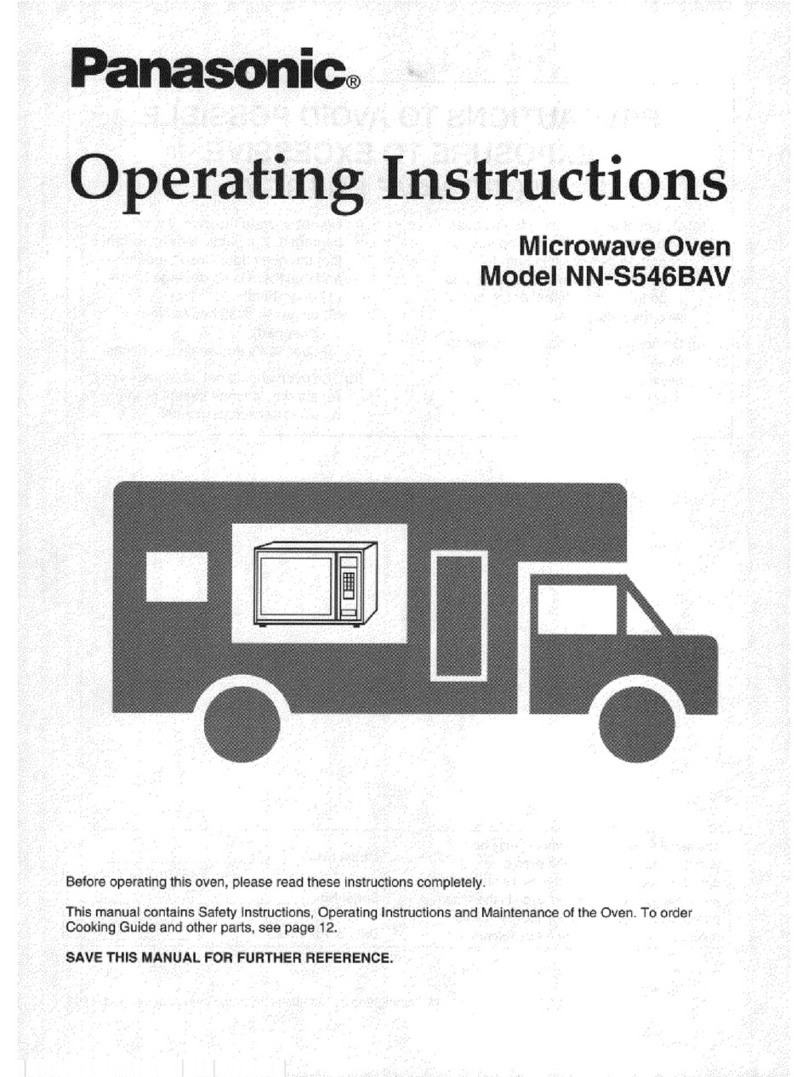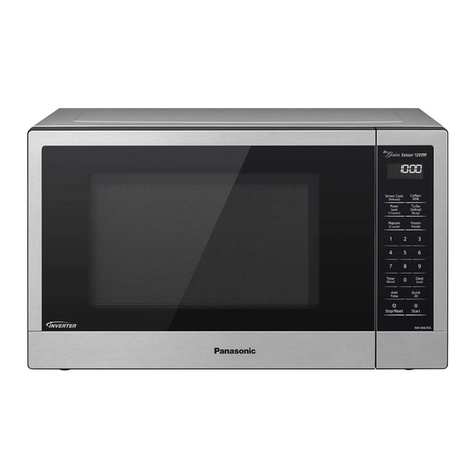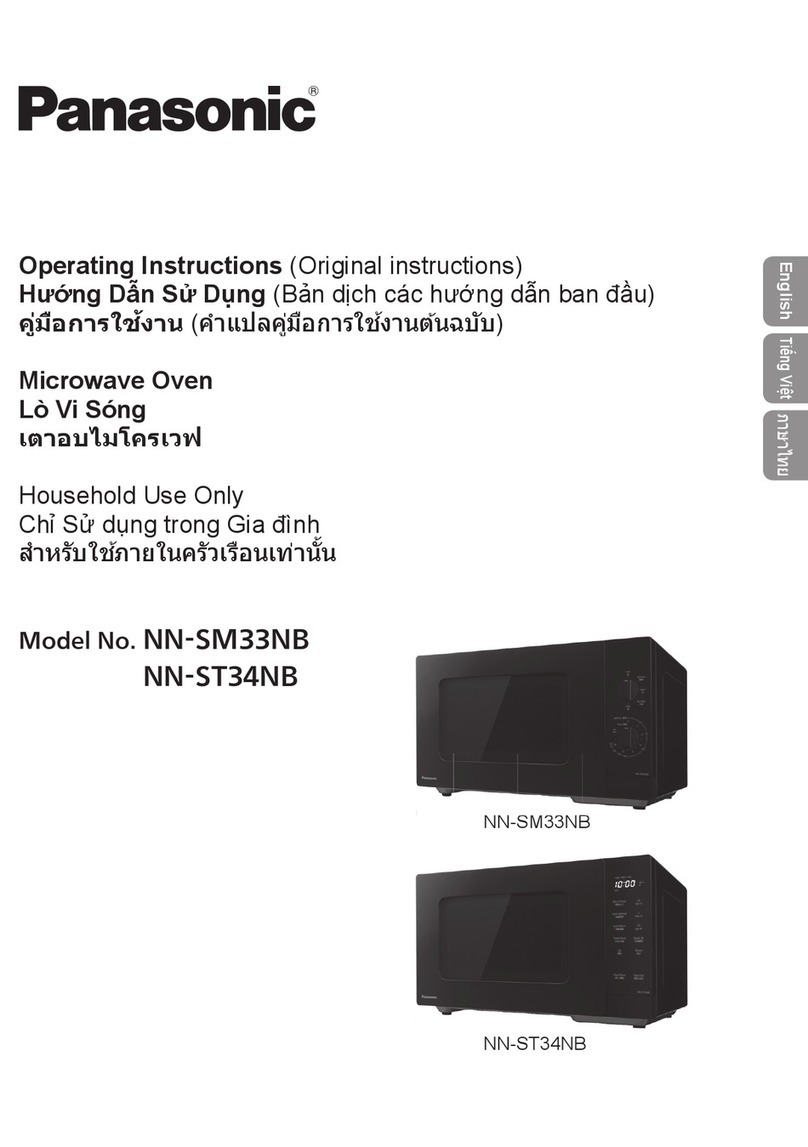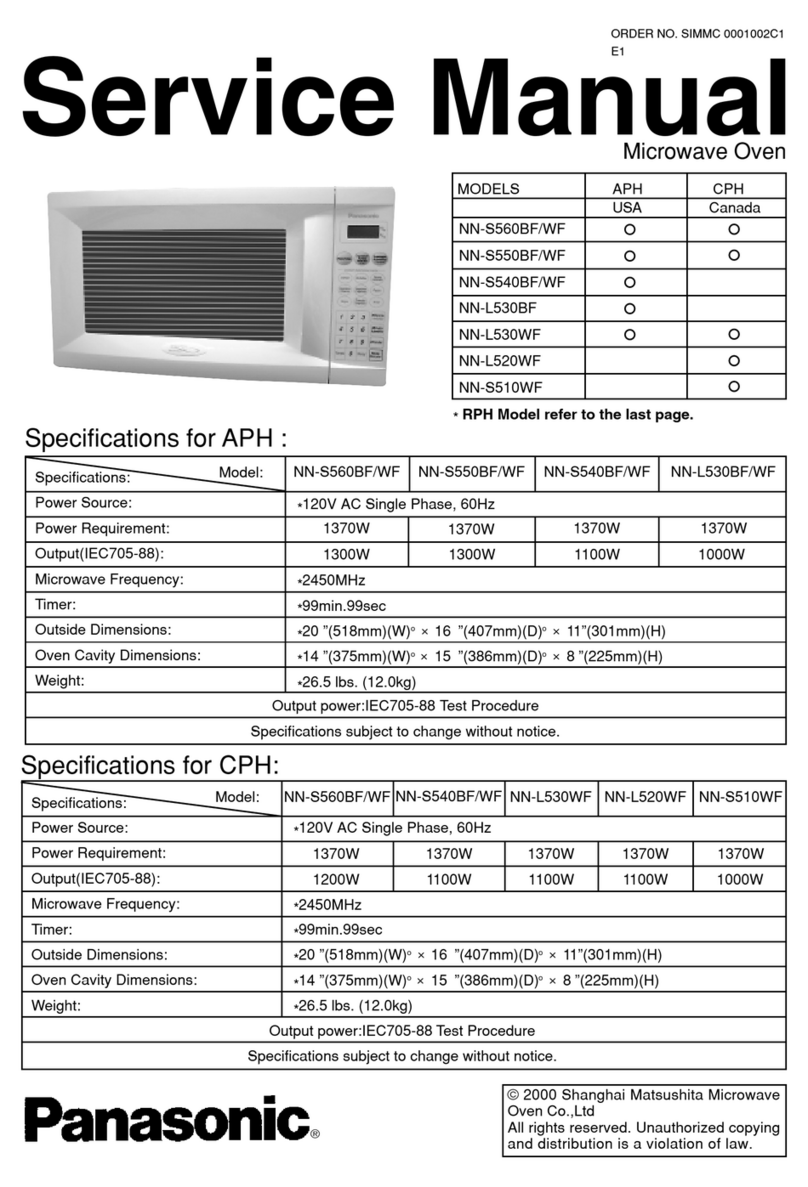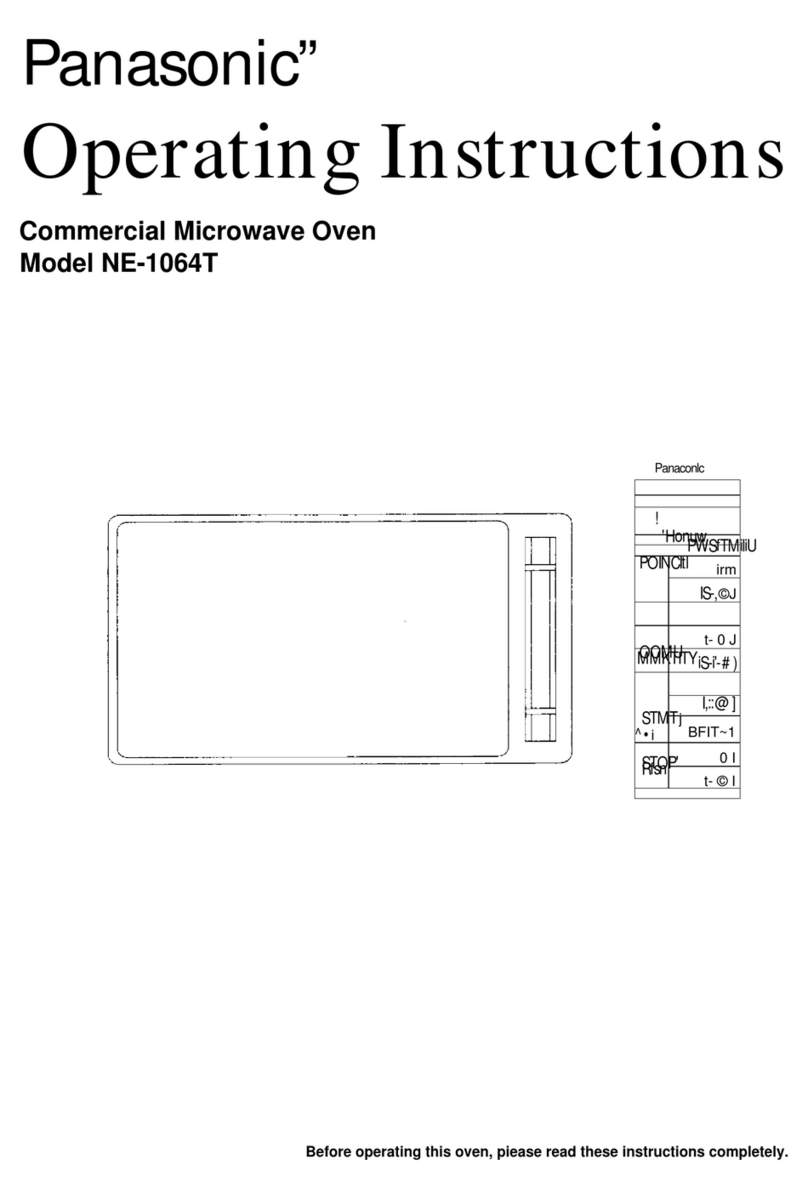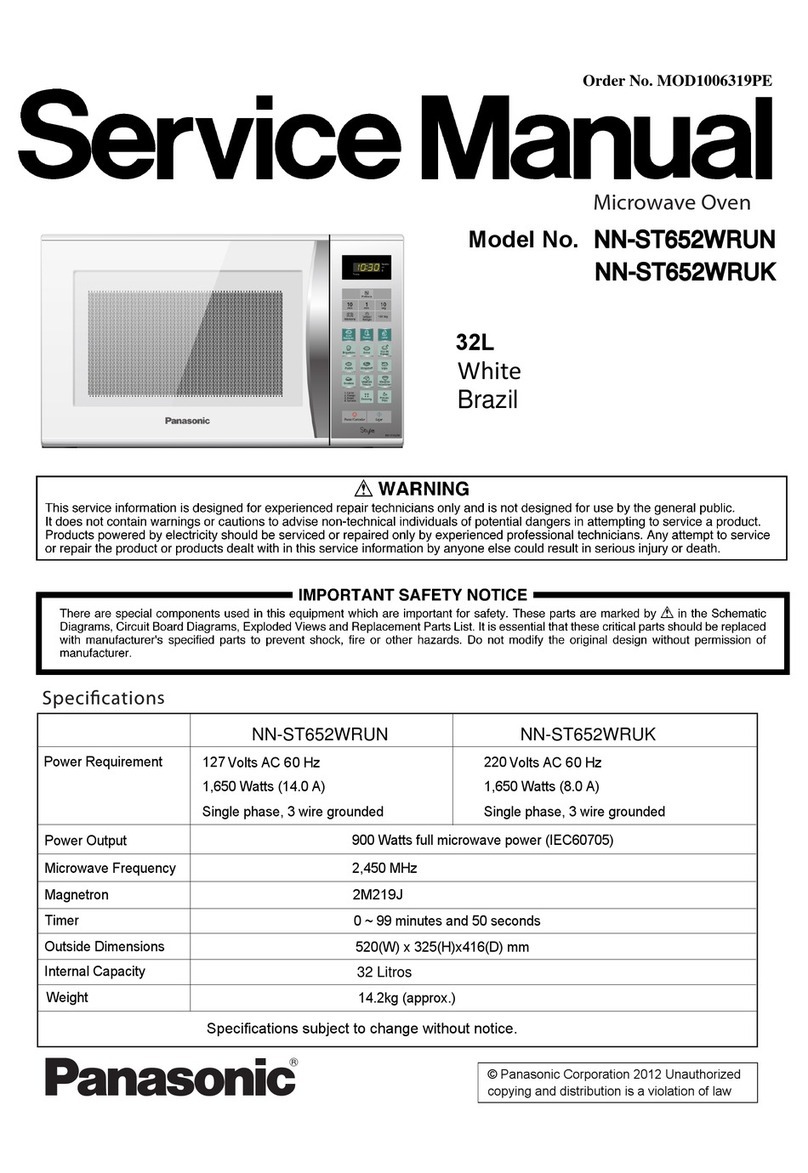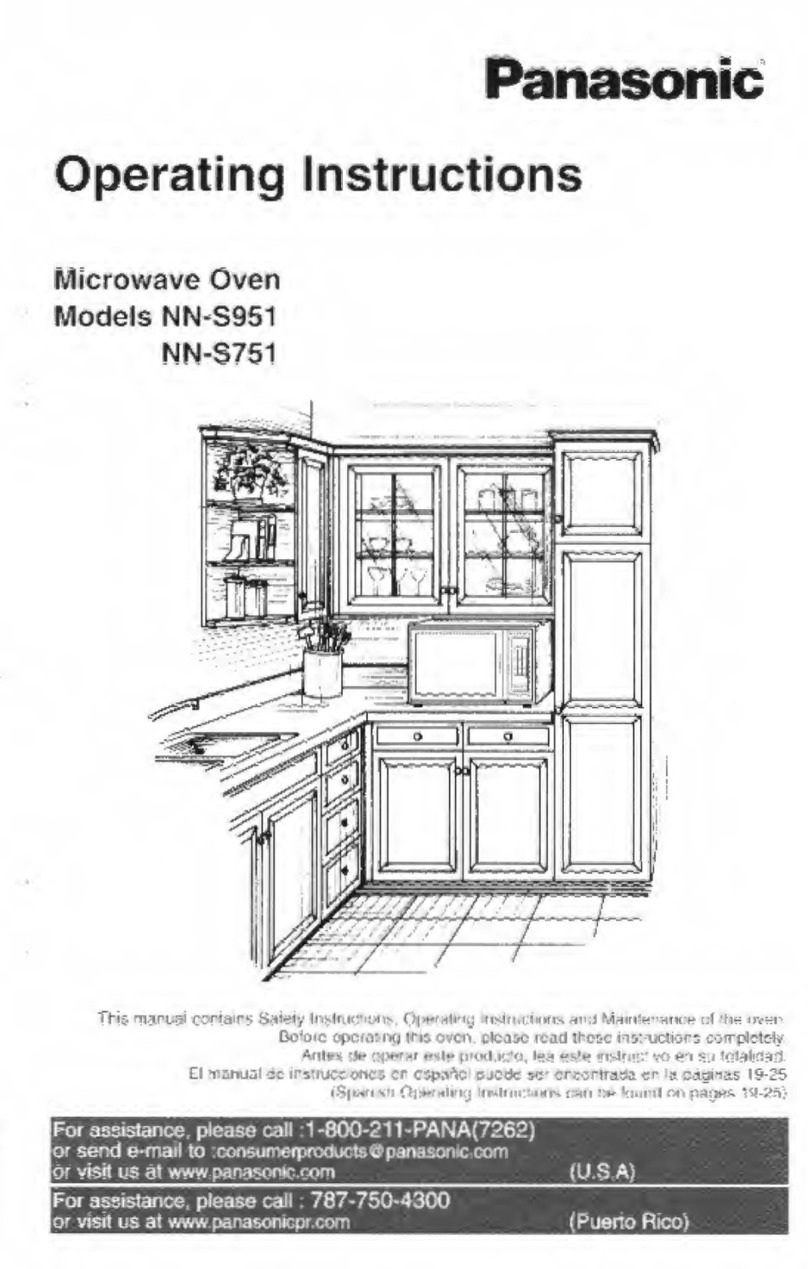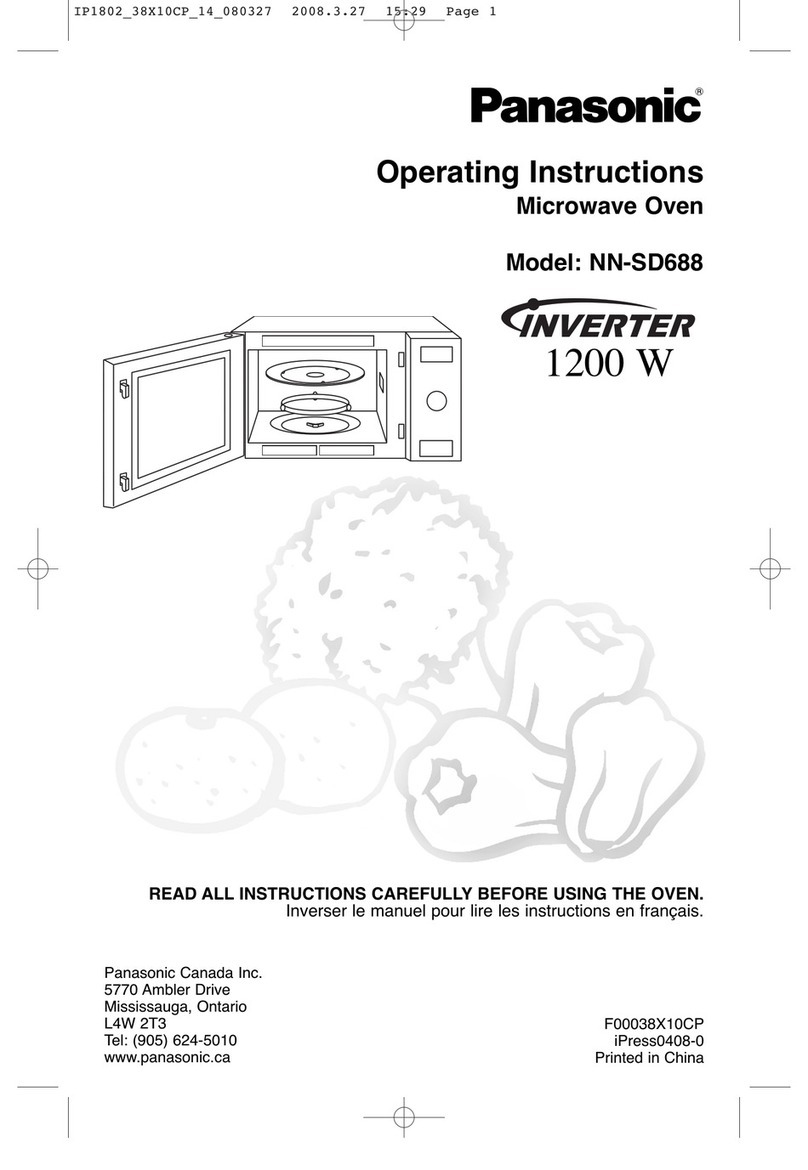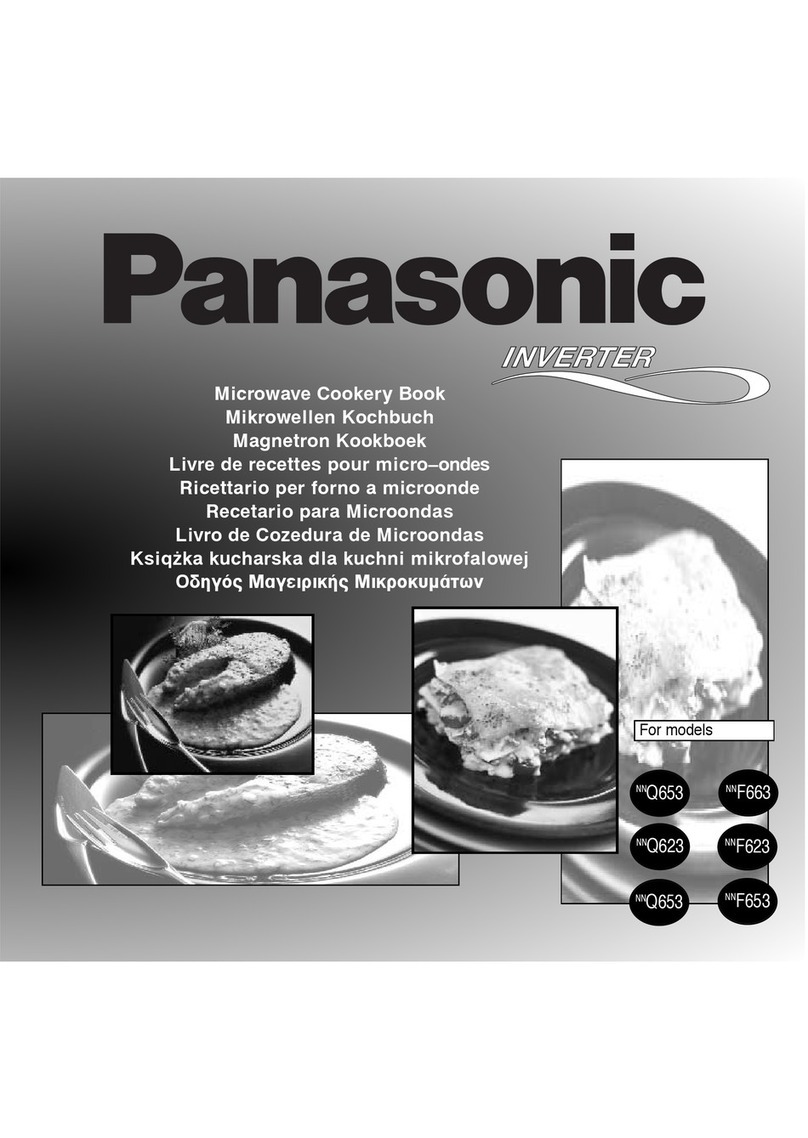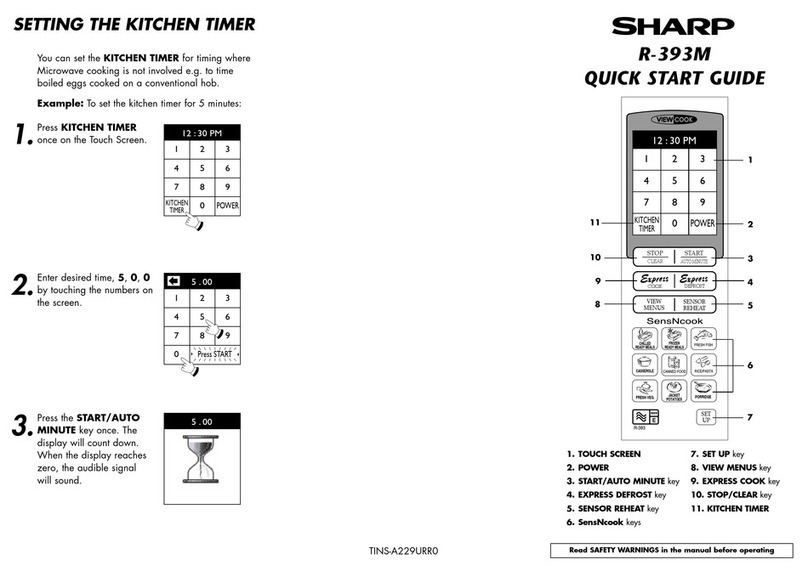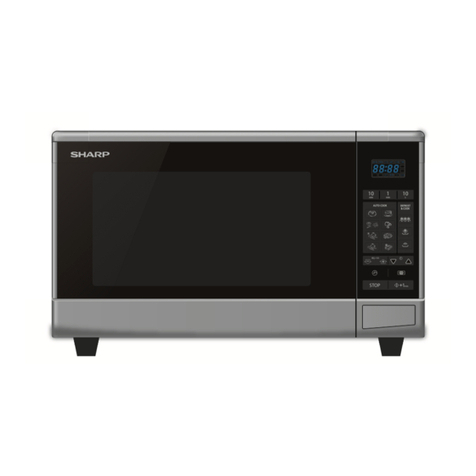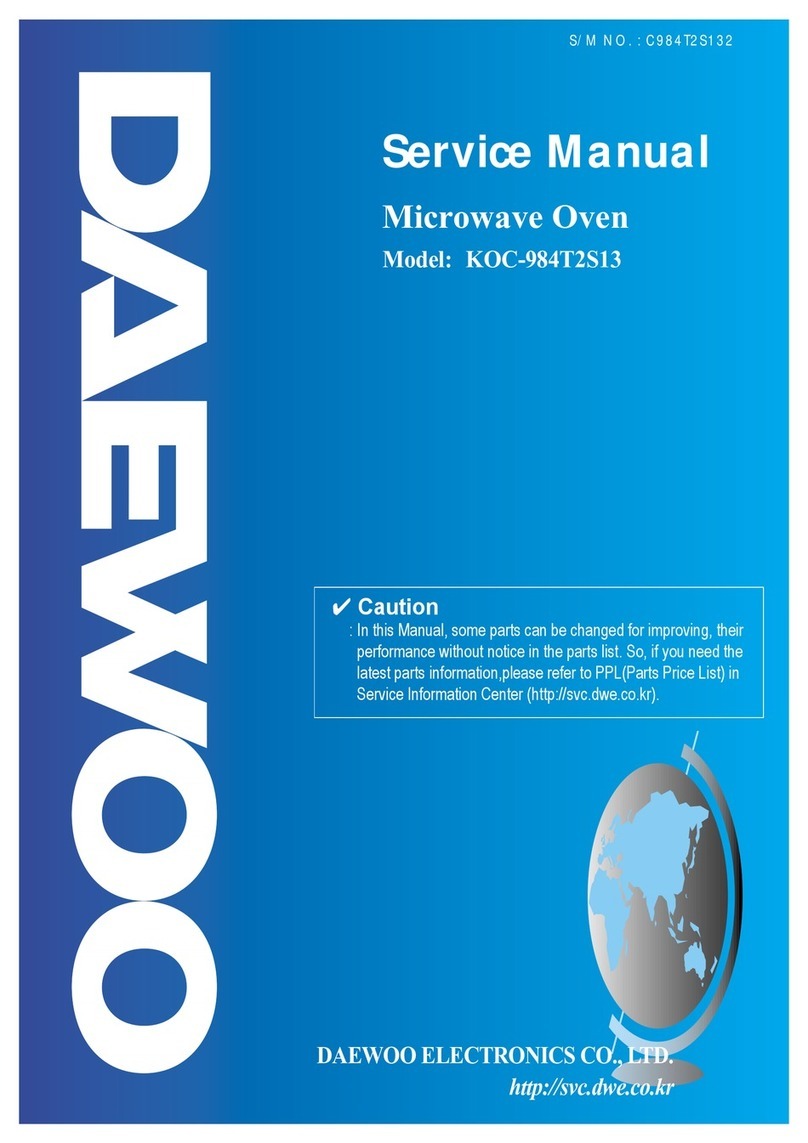
– 3 –
Installation and General Instructions
General Use
In order to maintain high quality, do not operate1. the oven when empty. The microwave energy will
reflect continuously throughout the oven if no food
or water is present to absorb energy. This can lead
to damage to the microwave oven including arcing
within the oven cavity.
If smoke is observed, press the2. STOP/RESET Pad
and leave door closed in order to stifle any flames.
Disconnect the power cord, and/or shut off power
at the fuse or circuit breaker panel.
Do not dry clothes, newspapers or other materials3. in oven. They may catch on fire.
Do not use recycled paper products, unless the4. paper product is labelled as safe for microwave oven
use. Recycled paper products may contain impurities
which may cause sparks and/or fires when used.
Do not use newspapers or paper bags for cooking.5. Do not hit or strike the Control Panel. Damage to6. controls may occur.
POT HOLDERS may be needed as heat from food7. is transferred to the cooking container and from
the container to the Glass Tray. The GlassTray can
be very hot after removing the cooking container
from the oven.
Do not store flammable materials next to, on top8. of, or in the oven. It could be a fire hazard.
Do not cook food directly on Glass Tray unless9. indicated in recipes. (Food should be placed in a
suitable cooking utensil.)
DO NOT10. use this oven to heat chemicals or other
non-food products. DO NOT clean this oven with
any product that is labelled as containing corrosive
chemicals. The heating of corrosive chemicals in
this oven may cause microwave radiation leaks.
Do not leave the microwave unattended while11. reheating or cooking food in disposable containers
made of plastic, paper or other combustible materials,
as these types of containers can ignite if overheated.
Appliances are not intended to be operated by means12. of an external timer or separate remote-control system.
Placement of Oven
The oven must be placed on a flat, stable surface,1. more than 85 cm above the floor. For correct
operation, the oven must have sufficient air flow.
Allow 15 cm of space on the top of the oven, 10 cm
at the back, and 5 cm on both sides. If one side of
the oven is placed flush to wall, the other side or
top must not be blocked. Do not remove feet.
Do not block air vents. If they are blockeda. during operation, the oven may be overheated
and damaged. When using any cloth over the
oven, the air intake and exhaust should not be
blocked. Also allow sufficient space on back and
both sides of the oven.
Do not place oven near a hot or damp surfaceb. such as a gas stove, electric range or sink etc.
Do not operate oven when room humidity is too high.c.
This oven was manufactured for household use only.2.
The appliance is freestanding type and shall not be3. placed in a cabinet.
This appliance is intended to be used in household4. and similar applications such as:
staff kitchen areas in shops, offices and other• working environments;
farm houses;• by clients in hotels, motels and other residential• environments;
bed and breakfast type environments.•
Food
Do not use your oven for home canning or the1. heating of any closed jar. Pressure will build
up and the jar may explode. In addition, the
microwave oven cannot maintain the food at the
correct canning temperature. Improperly canned
food may spoil and be dangerous to consume.
Do not attempt to deep fat fry in your microwave2. oven.
Do not boil eggs in their shell and whole hard-3. boiled eggs (unless otherwise stated in Cooking
Guide section). Pressure will build up and the eggs
will explode.
Potatoes, apples, egg yolks, chicken wings, whole4. squash and sausages are examples of foods with
nonporous skins. This type of food must be pierced
before cooking, to prevent bursting.
When heating liquids, e.g. soup, sauces and5. beverages, in your microwave oven, overheating
the liquid beyond boiling point can occur without
evidence of bubbling. This could result in a sudden
boil over of hot liquid. To prevent this possibility the
following steps should be taken:
Avoid using straight-sided containers witha) narrow necks.
Do not overheat.b) Stirc) the liquid before placing the container in the
oven and halfway through cooking time.
After heating, allow to stand in the oven ford) a short time, stirring again before carefully
removing the container.
DO NOT USE A CONVENTIONAL MEAT6. THERMOMETER IN THE MICROWAVE OVEN.
To check the degree of cooking of roasts and
poultry use a MICROWAVE THERMOMETER.
Alternatively, a conventional meat thermometer
may be used after the food is removed from the
oven. If undercooked, return meat or poultry to
the oven and cook for a few more minutes at the
recommended power level. It is important to ensure
that meat and poultry are thoroughly cooked.
COOKING TIMES given in the Cooking Guide7. section are APPROXIMATE. Factors that may
affect cooking time are preferred degree of
moisture content, starting temperature, altitude,
volume, size, shape of food and utensils used. As
you become familiar with the oven, you will be able
to adjust for these factors.
It is better to UNDERCOOK RATHER THAN8. OVERCOOK foods. If food is undercooked, it can
always be returned to the oven for further cooking.
If food is overcooked, nothing can be done. Always
start with minimum cooking times recommended.
Extreme care should be taken when cooking9. popcorn in a microwave oven. Cook for minimum
time as recommended by manufacturer. Use
the directions suitable for the wattage of your
microwave oven. NEVER leave oven unattended
when popping popcorn.
When heating food in plastic or paper containers,10.check the oven frequently due to the possibility of
ignition.
The contents of feeding bottles and baby food jars11. are to be stirred or shaken and the temperature
is to be checked before consumption, in order to
avoid burns.
